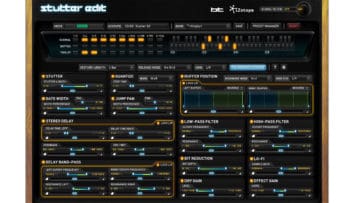Izotope Rx De Esser
3. ADVANCED VIEW
De-esser Nectar’s beautiful De-esser module can transparently tame loud sibilant sounds (“esses”) in your vocal track, without stepping on the natural performance. With an elegant interface that lets you adjust the threshold and detection filter directly on the spectrogram, you’ll barely have to think about finding the perfect settings. Nectar 3 is bundled with iZotope RX 7 Breath Control, which is designed to intelligently detect breaths in dialogue or vocal recordings and automatically suppress them, saving invaluable time in the comping and prep stage of vocal editing. A de-esser can be used to control sibilance and tame other high frequency issues in a vocal track.
- Nov 01, 2015 How To Remove Audio Noise - Izotope RX Tutorial In this tutorial I show you how to easily clean your audio and how to remove noise from your audio, Subscribe for new VFX and Filmmaking tutorials.
- RX’s De-plosive audio plug-in and module removes plosive pops and mic bumps in a recording, and does so more intelligently and transparently than a simple EQ.
Nectar’s De-Esser is a powerful tool for controlling sibilance on vocal takes as well as other high frequency problems.
Traditionally, De-Essing dynamically reduces loud sibilant noises by means of a threshold and ratio. As the sibilant audio in a particular frequency band pass a certain threshold, they are attenuated. This can work well with other instruments that are less dynamic in nature such as guitars.
Vocals however, tend to be very dynamic and contain certain sections that are quieter in level than others. This can pose a problem with a threshold based De-Esser as settings that might work great for one section of audio, may be too drastic for another section.
Controlling Sibilance
/smart-strings-garageband-mac.html. Aug 14, 2014 GarageBand '11 does not have any smart instruments at all. The newest version, GarageBand 10.x.x. Has smart drummers. And you can use the arpeggiator to play chord patterns. But otherwise you have to fall back on the loops to use predefined chord progressions. However, you can play the smart instruments on your iPad. How to pluck (staccato) Smart Strings on Mac? I feel like I used to be able to set the way to play Smart Strings on Mac, but I can't find the setting anymore? I want to play some Smart String or String Ensemble as staccato notes. Enter Garageband’s Smart Strings. The first thing I show my students about the interface is how to produce pizzicato. Telling them that it’s similar to what the string players did in the video when they played the strings with their fingers instead of the bow, I demonstrate the tap and release motion. Mar 09, 2011 Audio Unit Extensions in iOS 11 allow you to play, record and mix third-party instruments or effects right into GarageBand. And then share your song with friends and family. The Alchemy synth is available on iPhone 6 or later, iPad Pro, iPad (5th generation), iPad Air 2, and iPad mini 4.
Nectar's De-Esser performs its processing independent of the incoming audio level. Whether your vocals are loud or soft, the amount of De-Essing taking place will be the same.
Izotope Rx De Esser De

This is performed by analyzing the current level of your vocal take, and how loud it is in proportion to the audio above the specified frequency parameter. If a large difference is detected due to a sibilance, the amount of Ess gain reduction will be applied.
Ess

Controls the amount of gain reduction that is applied to the incoming vocal take when a sibilance is detected. This gain reduction is applied quickly and transparently to the entire incoming vocal take, instead of simply reducing the gain of a particular set of frequencies.
This allows for much more natural sibilant reduction and prevents strong processing from creating the effect of the singer having a lisp.
Frequency
The frequency control is used to set how the De-Esser is going to detect any incoming sibilant material. This control serves as a cutoff point in which everything above the specified frequency will be used to detect sibilance, in proportion to the level of the entire audio take.
In general, this control can be left at its default value of 2500 Hz and should not need to be adjusted much in order to achieve excellent results on a wide variety of material.